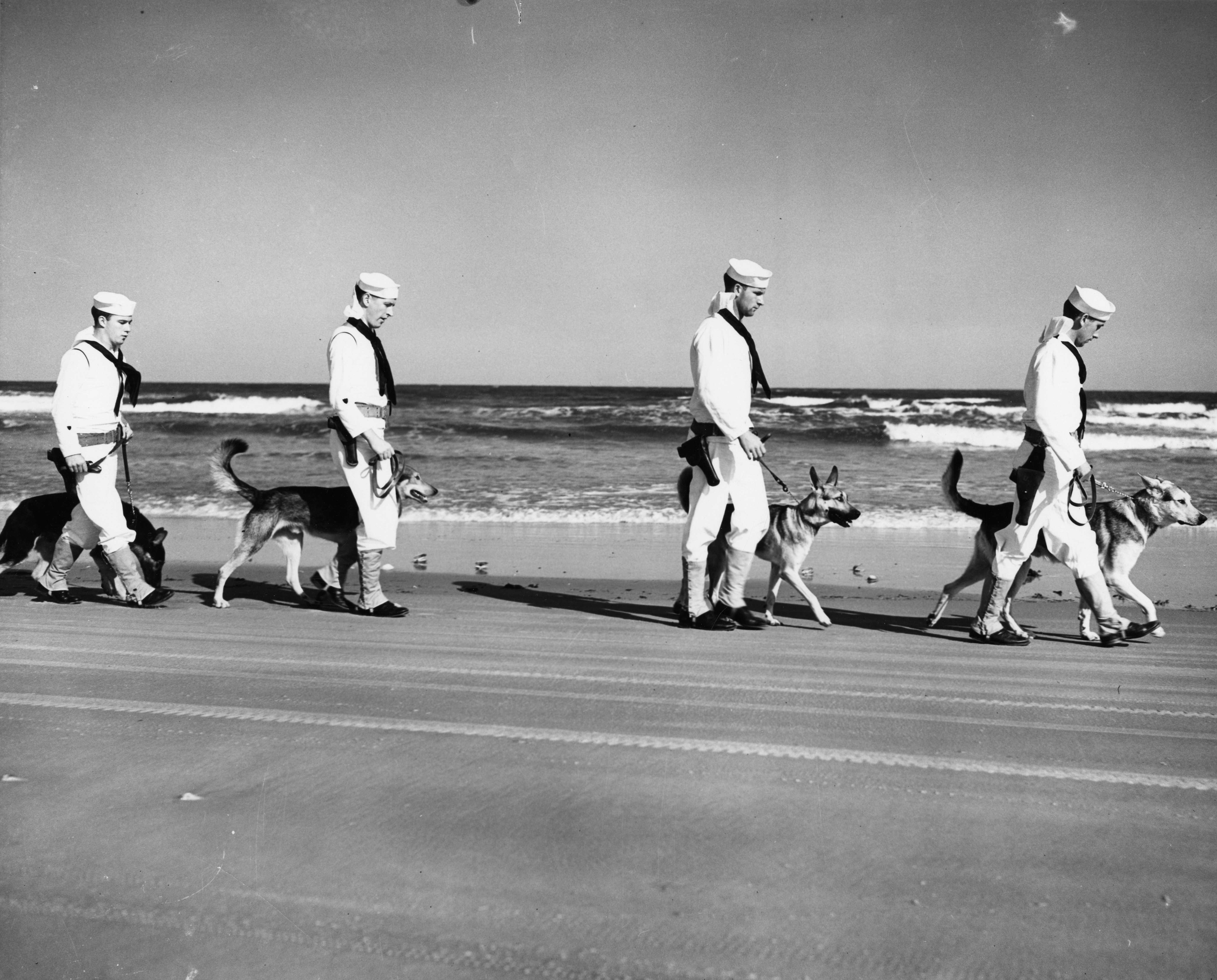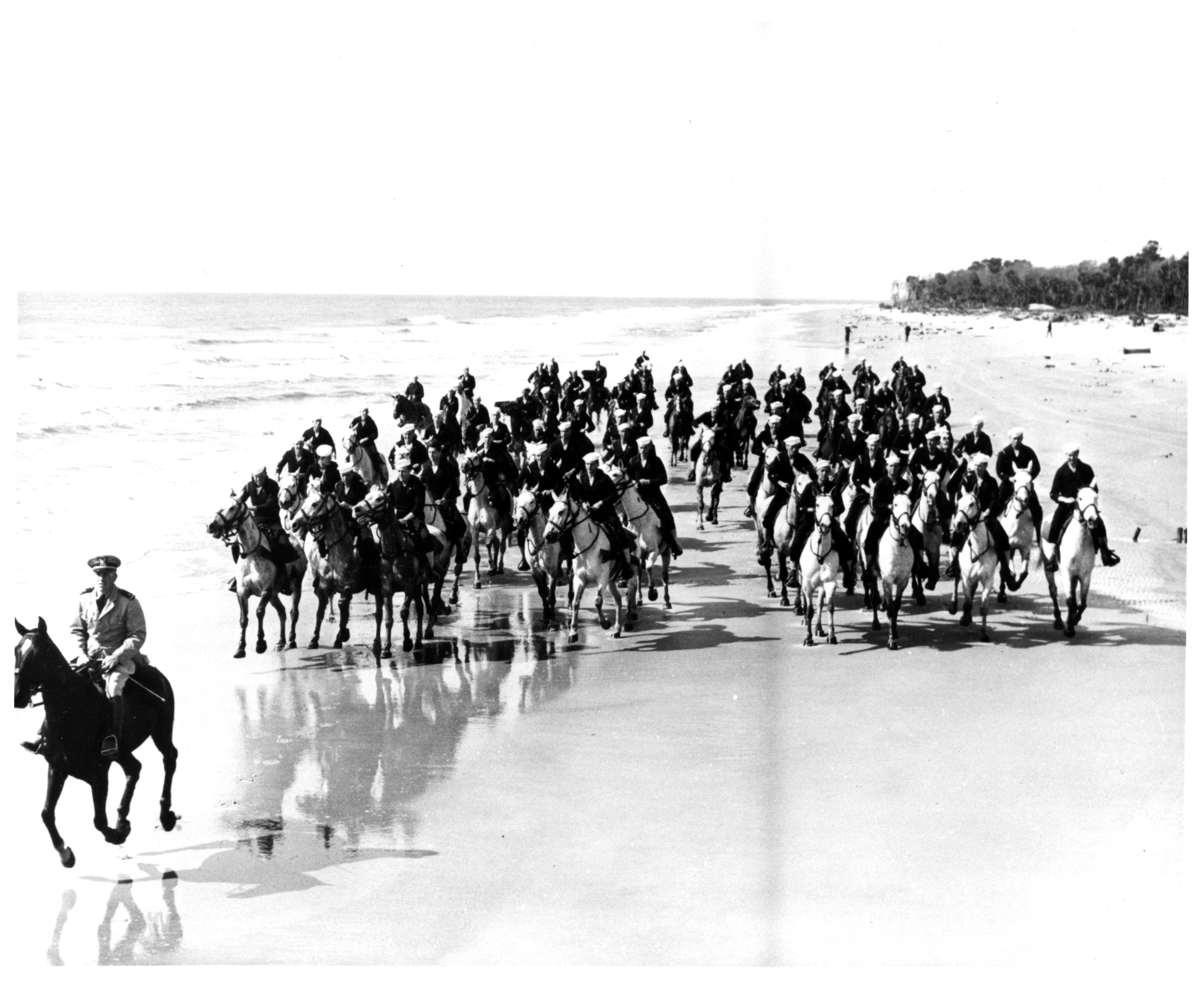The Beach Patrol in Oregon, which kept watch over the Oregon coastline during World War II, was part of the national Beach Patrol that monitored America’s coastline during the war. From 1942 to 1944, the United States Coast Guard organized and maintained the nationwide Beach Patrol, known as the Sand Pounders, employing some 24,000 men who kept vigil over 3,700 miles of coastline in ten districts. Their objective was to report suspicious activity and block enemy vessels from landing.
The Beach Patrol was formed in response to two sabotage attempts by the Abwehr, the German intelligence service. On the night of June 13, 1942, a German U-Boat commanded by Lieutenant Commander Lindner surfaced off Amagansett, Long Island, and four men in German navy uniforms went ashore to begin Operation Pastorius, a plan to disable American industrial and transportation sectors. The men were discovered and arrested, as was another group who landed four days later at Ponte Vedra, Florida. Those incidents made it clear that America’s 12,400 miles of coastline were susceptible to attack and infiltration. Within a month of the sabotage efforts, the Coast Guard began organizing the Beach Patrol in collaboration with the FBI, the U.S. Army, and local police.
While the East Coast feared infiltration from Europe, the West Coast worried about Japan, especially after the December 1941 attack on Pearl Harbor. Then, on February 23, 1942, a Japanese submarine bombarded Ellwood near Santa Barbara, causing minor onshore damage. The attack was followed on June 21 by the bombardment of Battery Russell at Fort Stevens by a Japanese submarine commanded by Meiji Tagami. Again, the shots caused only slight damage, but both attacks increased the urgency of having a nationwide beach patrol system.
The Beach Patrol created an integrated communication system, a network of lifeboat stations, lighthouses, and lookouts. Patrolmen carried portable handset telephones, and jack boxes (small communication devices) were set up at intervals along the coast, which required thousands of miles of landlines and submarine cables. In mid-1942, the Coast Guard began its Dogs for Defense program and eventually provided about two thousand dogs for the Beach Patrol, all trained at Elkins Park Training Station in Pennsylvania and Hilton Head, South Carolina. On September 16, 1942, the Secretary of the Navy authorized horse-mounted patrols, and directives went out to the field a month later. The horse patrols began on the West Coast in December 1942, with the first patrol in the Northwest stationed on Long Beach Peninsula, just north of the Columbia River in Washington.
The Beach Patrol divided Washington and Oregon into three sections, two of them in Oregon: the Astoria sector, which ran from Cape Elizabeth on the central Washington coast to Cascade Head, and the Coos Bay sector, which stretched from Cascade Head to the California state line. Fort Stevens in Oregon and Fort Canby and Fort Columbia in Washington guarded the entrance to the Columbia River as part of the Coastal Defense Command.
South of Astoria, the Beach Patrol got underway quickly because of an existing network of Coast Guard lifeboat stations. By April 1942, thirteen lifeboat stations and twenty-six coastal lookout stations guarded the Oregon Coast. Beach Patrol men billeted in Coast Guard stations alongside stables and kennels for the horses and dogs. Rockaway Beach Patrol personnel, for example, lived in the Tillamook Bay Lifeboat Station, and the Coast Guard station at Bandon housed 118 men and was used as the Beach Patrol headquarters.
Watchtowers were constructed to watch over inlets and bays, and surveillance was maintained at Depoe Bay, Yaquina Bay, and Coos Bay. At the Depoe Bay station, thirty men and eight dogs patrolled the cliffs; the same was true at Pistol River on the south coast. Each station placed towers at the mouths of navigable rivers. The Coos Bay sector, for example, had six river patrols from the Siuslaw River south to the Pistol River.
On the south Oregon Coast, with its cliffs and inaccessible beaches, the Beach Patrol used dog or foot patrols and often commandeered local hotels to house the men. A foot patrol from Langlois, for example, began at Floras Lake Hotel and patrolled as far south as the Sixes River near Cape Blanco. Brookings, the southernmost Beach Patrol station, eventually had 110 men and six dogs.
The impending Normandy assault and the reduced likelihood of the U.S. being subject to seaborne attack or saboteur landings signaled the beginning of the end of the Beach Patrol. On February 18, 1944, Admiral Russell R. Waesche, commandant of the Coast Guard, reduced the Beach Patrol on the West Coast by 50 percent and released 2,500 men from Beach Patrol duty. Many immediately entered the army or navy for combat duty. On July 15, 1944, the West Coast was ordered to demobilize, and all beach patrols were discontinued, except for emergencies, two weeks after D-Day. Many of the horses used in Oregon were sold at the Tillamook County Fairgrounds, and Beach Patrol stations were eliminated or consolidated with Coast Guard lookout stations.
-
![]()
Mounted Beach Patrol.
Courtesy U.S. Coast Guard -
![]()
USCG Beach Patrol, with dogs.
Courtesy U.S. Coast Guard -
![]()
Related Entries
-
![Fort Stevens]()
Fort Stevens
One of the three major forts designed to protect the mouth of the Colum…
-
![Point Adams Lighthouse and Life-Saving Station]()
Point Adams Lighthouse and Life-Saving Station
Point Adams was given its name by Captain Robert Gray, who in his offic…
-
![Port Orford Lifeboat Station]()
Port Orford Lifeboat Station
Built by Julius Yuhasz and Arvid Olson, a U.S. Coast Guard Lifeboat Sta…
-
![U.S. Life-Saving Service in Oregon]()
U.S. Life-Saving Service in Oregon
The mission of the U.S. Life-Saving Service was to rescue those in peri…
Related Historical Records
Map This on the Oregon History WayFinder
The Oregon History Wayfinder is an interactive map that identifies significant places, people, and events in Oregon history.
Further Reading
Bishop, Eleanor. Prints in the Sand: The U.S. Coast Guard Beach Patrol During World War II. Missoula, Mont.: Pictorial Histories Publishing Company, 1989.
"WWII on the Oregon Coast." Cannon Beach History Center, April 8, 2015.
“The Sand Pounders: The U.S. Coast Guard Mounted Patrol.” Horse Canada, November 19, 2014.
Noble, Dennis. The Beach Patrol and Corsair Fleet: The U.S. Coast Guard in World War II. Washington D.C.: Coast Guard Historian’s Office, 1992
Willoughby, Malcolm F. “The Beach Pounders.” Naval Institute Proceedings 83 (August 1957): 654.







